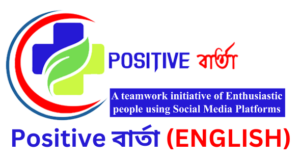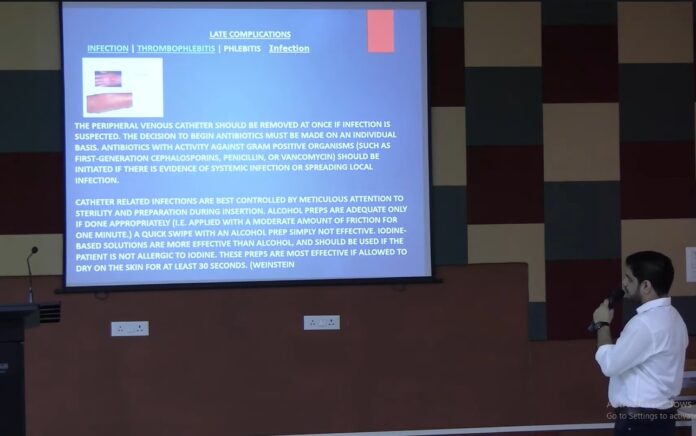Mastering IV Access: In a rapidly evolving medical landscape, the ability to establish intravenous (IV) access efficiently is a crucial skill for healthcare professionals. Recognizing this necessity, SANTINIKETAN MEDICAL COLLEGE & HOSPITAL recently organized a comprehensive classroom demonstration on IV access, led by Dr. Salman Hussein, a renowned anesthesiologist and critical care specialist. This session provided an invaluable learning experience for the MBBS Batch of 2021-22, focusing on essential techniques and considerations for mastering IV access.
Importance of IV Access
Intravenous access is fundamental in medical practice, enabling healthcare providers to administer medications, fluids, and blood products directly into the bloodstream. It is particularly vital in emergency situations where rapid intervention can significantly impact patient outcomes. Therefore, mastering IV access is not just about the technical skill; it involves understanding the clinical context and implications of this procedure.
Overview of the Demonstration
Dr. Hussein’s session was structured to provide a step-by-step guide to establishing IV access in a simulated environment, ensuring that participants could engage with the material actively. The key topics covered included:
- Indications for IV Access
- Types of IV Access
- Equipment Preparation
- Patient Positioning
- Potential Complications
Each of these components was elaborated upon, allowing students to gain a thorough understanding of the procedures involved.
Detailed Explanation of IV Access Procedures
Dr. Hussein began with an overview of the various indications for IV access, explaining when it is necessary to use peripheral versus central lines. He emphasized the importance of clinical judgment in choosing the appropriate method based on the patient’s condition and treatment requirements.
Types of IV Access
The session delved into the different types of IV access, including:
- Peripheral IV Access: Commonly used for short-term therapies, peripheral IVs are typically placed in the veins of the arms or hands. Dr. Hussein discussed the benefits and limitations of this approach, including the ease of insertion and potential for complications such as phlebitis.
- Central IV Access: For more complex treatments, such as long-term medication administration or when peripheral access is challenging, central lines may be used. The demonstration included a detailed explanation of the insertion techniques for central venous catheters, highlighting the importance of sterile techniques to prevent infections.
Equipment Preparation
A significant portion of the demonstration was dedicated to the preparation of equipment. Dr. Hussein emphasized the need for thorough preparation to ensure the procedure goes smoothly. Participants learned about the essential tools, including:
- IV catheters of varying sizes
- Tourniquets
- Antiseptic solutions
- Sterile gauze and dressings
- IV fluid bags and administration sets
Properly preparing and organizing these materials is crucial in minimizing errors and ensuring a successful IV insertion.
Patient Positioning and Comfort
Patient positioning is another critical aspect of IV access. Dr. Hussein provided insights into how proper positioning can facilitate easier access to veins and enhance patient comfort. He demonstrated various techniques for positioning patients based on their condition and the site of insertion, emphasizing the need for effective communication with patients to alleviate anxiety.
Potential Complications
Dr. Hussein addressed the potential complications that can arise from IV access, including:
- Infection
- Hematoma formation
- Infiltration
- Phlebitis
He discussed strategies for preventing these complications, such as maintaining aseptic technique, proper site selection, and regular monitoring of the IV site. This segment was particularly enlightening, as it equipped students with the knowledge to recognize and address complications promptly.
Demonstration of IV Cannulation Methods
The highlight of the session was the live demonstration of various IV cannulation techniques. Dr. Hussein showcased different approaches, providing clear visual guidance on how to perform successful IV insertions. Key techniques included:
- The “Flashback” Technique: Demonstrating how to identify proper vein entry through blood return in the catheter hub.
- Using Ultrasound Guidance: For difficult-to-access veins, Dr. Hussein highlighted the importance of ultrasound technology, which can significantly improve the success rate of IV insertions.
Tips for Preventing Complications
To ensure patient safety, Dr. Hussein shared essential tips for preventing complications:
- Always use the smallest gauge catheter necessary for the procedure to reduce trauma to the vein.
- Keep the IV site clean and dry, regularly changing dressings as needed.
- Educate patients about signs of complications to monitor post-insertion.
Guidance on Managing Difficult IV Access Scenarios
Recognizing that not all patients are straightforward, Dr. Hussein provided guidance on managing challenging IV access scenarios. He discussed alternative sites for insertion and techniques such as using a warm compress to dilate veins or utilizing other access devices when standard methods fail.
The comprehensive demonstration on mastering IV access by Dr. Salman Hussein at SANTINIKETAN MEDICAL COLLEGE & HOSPITAL was a significant educational opportunity for future medical professionals. By emphasizing both the technical and clinical aspects of IV access, the session equipped students with the skills and knowledge necessary for successful practice.
As the medical field continues to advance, ongoing education and hands-on training in critical procedures like IV access remain paramount. This session not only enhanced the participants’ understanding of IV techniques but also reinforced the importance of patient safety and care, preparing them for the challenges they will face in their medical careers.
Read More: Santiniketan Medical College & Hospital | A Spotlight on Anaesthesiology Education








[…] Read More: Mastering IV Access: A Comprehensive Guide for Medical Professionals at Santiniketan Medical College […]